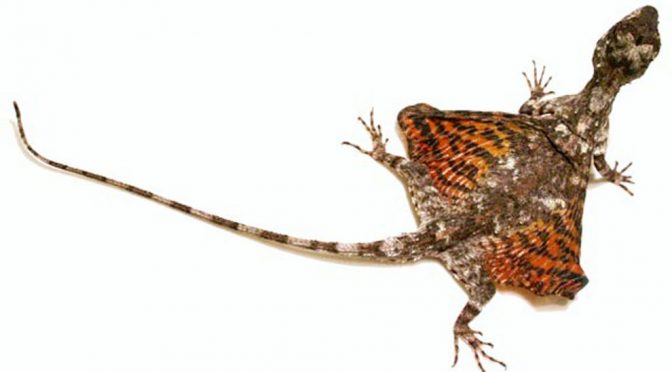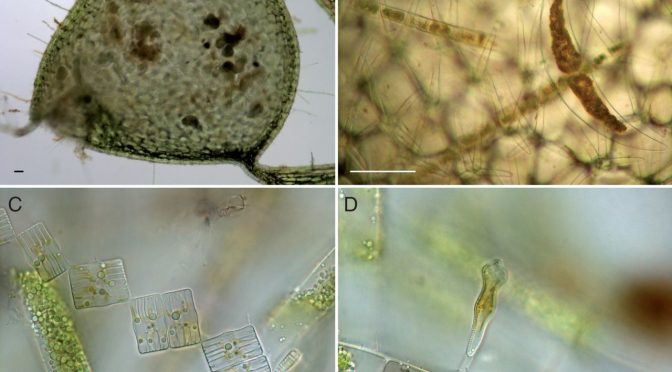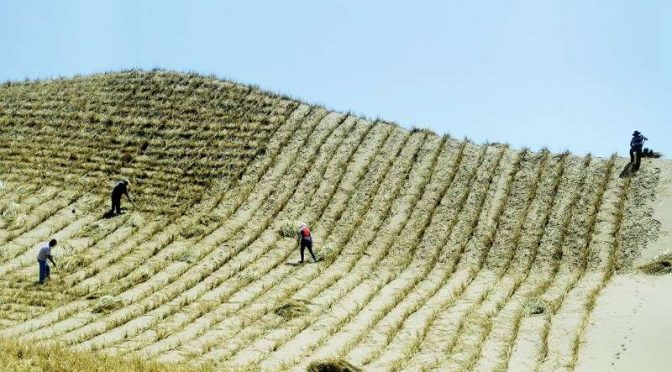Celebrating Plants and People
-

Do Flying Lizards Mimic Falling Leaves To Survive?
They are also beautifully coloured and Klomp has shown that, in at least one species, these hues match those of falling leaves from the local area. This, she says, is no coincidence. She thinks that the lizards have evolved to mimic falling leaves, to avoid the attention of birds. (Click image or title for full…
-
The Botanist Who Hunts For Giant Trees
“There are dozens of large tree species waiting to be discovered in this area,” he said. “There’s very little known of them. The local people don’t even have names for them. If you scan them for chemicals you might find something of great value to society, either now or in the future. You never know…
-

“Carnivorous” Plant Also Likes Salads
Carnivorous plants catch and digest tiny animals in order and derive benefits for their nutrition. Interestingly the trend towards vegetarianism seems to overcome carnivorous plants as well. The aquatic carnivorous bladderwort, which can be found in many lakes and ponds worldwide, does not only gain profit from eating little animals but also by consuming algae…
-
Herbarium Specimens Help Document Increasing Air Polution
From this study, we can conclude that urban activities in Valencia have substantially raised levels of Cr, Ni and Cd in the urban atmosphere, which consequently increased atmospheric deposition due to changes in human activities over more than 70years of urban growth
-
Deforestation Changes Global Weather Patterns (Not A Global Warming Story)
Tropical deforestation delivers a double whammy to the climate–and to farmers. Most people know that climate change is a dangerous global problem, and that it’s caused by pumping carbon into the atmosphere. But it turns out that removing forests alters moisture and air flow, leading to changes–from fluctuating rainfall patterns to rises in temperatures–that are…
-
Plants Re-Set Their Seeds’ Germination Based On Climate Experience
If the mother experiences warmer temperatures, it produces more of a protein called Flowering Locus T (FT) which represses production of tannins in the fruit, making seed coats thinner and more permeable. This means they germinate more quickly.
-
Will The World’s Rarest Primate Disappear Along With Its Forest?
Without more suitable habitat for gibbons to disperse into and form new social groups, the population size will ultimately not be able to increase, so forest availability across the Bawangling landscape and beyond is really key to their survival,
-
Another New Plant Pollination Strategy: Fooling Food-Stealing Flies
This pollination system has two novel aspects. First, the plant mimics compounds released from freshly killed insects rather than living insects. Secondly, unlike bees, flies deceived by Aristolochia rotunda are not looking for food for their offspring but for themselves (insect secretions or hemolymph).
-
How Ben Franklin Used An Herb To Thwart Counterfeiters
Benjamin Franklin’s Philadelphia printing shop made plaster molds from pressed sage leaves to create metal stamps for marking foliage patterns on Colonial currency. The distinctive contours of leaf spines, stems and veins were meant to thwart counterfeiters, and Franklin’s workers managed to keep the casting technique a secret that has puzzled modern scholars, too.
-

Is China’s Great Green Wall Of Trees Stopping The Desert?
Vegetation has improved and dust storms have decreased significantly in the Great Green Wall region, compared with other areas
